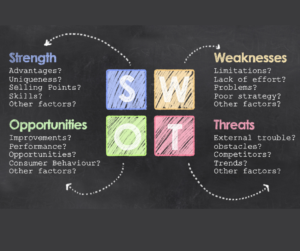Mary E. Marshall's Blog, page 3
November 30, 2022
Hiring
 A company’s most valuable asset is usually its people. Nonetheless, while businesses put a lot of resources into research for product development, they frequently leave the selection and training of human “assets” to untrained professionals, to guesswork, or to the belief that you can teach anyone to do something just because you like them. These assumptions are just as costly for a company as going to market with a product that won’t sell.
A company’s most valuable asset is usually its people. Nonetheless, while businesses put a lot of resources into research for product development, they frequently leave the selection and training of human “assets” to untrained professionals, to guesswork, or to the belief that you can teach anyone to do something just because you like them. These assumptions are just as costly for a company as going to market with a product that won’t sell.
There is so much information available about hiring that it can be a daunting task to sort through it all and decide what will work best for your company and your values. The method I see most often at entrepreneurial companies is improvisational: “Let’s give it a try and see if it works.” Unfortunately, in most cases, hiring this way does not. And when your hiring process doesn’t work, it’s a costly failure. Finding and interviewing candidates for a position should be a slow process, like dating before you get married. You want to date for as long as it takes before you commit because, as anyone who’s been through one knows, divorce is usually messy, emotional, time consuming, and expensive. Firing someone often is too. So, let’s walk through how to develop an intentional process for hiring and retaining the best candidates for your company.
Job Description and Salary RangeTo continue with the dating analogy, think of this step as a profile on a dating site. Without a clear job description, how will you know when you find the right candidate? You have to be clear about the desired profile or anyone you interview can seem like the right fit. As I mentioned in Chapter Three, I’m a big believer in a simple job description that includes:
Job duties and responsibilitiesRequired skills and characteristicsDesired skills and characteristicsIf you have a one- or two-page description incorporating these three items, you have a great start to your intentional hiring process. Your job description will allow you to identify the behaviors that will form the basis of your behavior-based interview questions, and that will reveal whether or not a candidate will be able to perform the job to your specifications. More detailed job descriptions are fine, just be sure to identify the key characteristics and skills required for a successful hire. Most importantly, don’t forget to declare your mission and values. If you hire for a values match, the rest gets a lot easier.
I recommend creating a salary range for every position in your company. By doing this before hiring, you set salary expectations early and you avoid the problem of employees expecting a raise every year just for sticking around. Another reason to set salary ranges in advance is that it helps establish a culture that pays for performance not longevity. Furthermore, when you have established a salary range based on research of comparable positions, it becomes much easier to say “no” when an employee at the top of the pay range asks for a raise because you’ve already established the fair ceiling for the position. Ambitious employees who want to earn a salary beyond the range for that position can request more training, take on added responsibility, or go to school on their own. Or, if one of your organizational values is learning, perhaps you can establish a program that reinforces additional training or education to help those talented or high-potential employees stay engaged or advance into new positions.
In setting salary ranges, it’s important to conduct some outside research on pay ranges for your industry and for each job. You want to be fair and aware of what market conditions are in your region and industry so you can attract and retain top talent. Getting a “bargain” on an employee is likely to backfire on you in the future when that person finds out what their marketable skills are worth to the industry. They will want more money, or they will leave, and neither of these is a conversation you want to have frequently. Fortunately, there are multiple resources for salary surveys. One of the most popular of these is www.salary.com, but you can also easily do research with geographic or industry-based parameters.
Your employees have probably already done their own research and found out what salary ranges are for their positions. If anything, they will put themselves in a higher classification than you would. Remember the “bookkeeper” I talked about in Chapter Three? The company hired young, unskilled help for accounting clerical positions and paid them twelve to fourteen dollars an hour. When they renamed that position “bookkeeper,” the employee did her research on what a bookkeeper typically makes and came back, survey in hand, demanding twenty dollars per hour, although her skills and experience hadn’t changed. Had the company had an accurate job description, title, and salary range set in advance, this awkward situation could have been avoided altogether.
Excerpted from my book, “Putting Together the Entrepreneurial Puzzle: The Ten Pieces Every Business Needs to Succeed.” Available here on Amazon.
The post Hiring appeared first on Mary Marshall // CEO Coach.
November 16, 2022
Letting an Employee Go
 Firing someone is never easy, but it can be done in a way that protects both your company and the dignity of the employee. The first step is to make sure you have tried to help the employee remedy the situation. If the issue is skills based, have you given them the appropriate feedback and training or made sure they know where to get it? Have you made it clear that following through on that is a job requirement? If it’s become apparent the person truly lacks the skills for their current position, is there any other position they could be successful in and are qualified for? If the answer to all of the above questions is no, then you can proceed to the three-step termination process described in Chapter Four.
Firing someone is never easy, but it can be done in a way that protects both your company and the dignity of the employee. The first step is to make sure you have tried to help the employee remedy the situation. If the issue is skills based, have you given them the appropriate feedback and training or made sure they know where to get it? Have you made it clear that following through on that is a job requirement? If it’s become apparent the person truly lacks the skills for their current position, is there any other position they could be successful in and are qualified for? If the answer to all of the above questions is no, then you can proceed to the three-step termination process described in Chapter Four.
If the problem is behavior based, make sure you’ve talked specifically about the behavior you are looking for, the behavior you cannot tolerate, and what the outcome will be if it does not change. Proceed with the three-step process and be sure to let the employee know that there is not a deadline by which to rectify the intolerable behavior. The change needs to occur immediately and be ongoing.
Once you’ve made the decision to terminate someone, be sure to check with your HR professional, outside resource, or employment attorney so that you can be sure to adhere to the proper procedures and applicable law for this situation. Then call the person into your office and be sure to have another person present. It’s always good to have a witness to what was said, for safety’s sake. Let the employee know that you are doing one of two things: 1.) eliminating the position; or 2.) letting them go for cause as described in the written warnings. Ask the person if they have any questions, but do not go into long explanations. Keep your discussion brief and focused on the specific behavioral shortfall described in the written warning. Let the person know what the terms are (for example if they will receive a severance package as described in your employee handbook) and give them their final paycheck. Mutually agree to a time at a later date for the person to return for their personal items (it is usually embarrassing for them to return to their office or cubicle immediately after being terminated), and then be prepared to escort them out.
None of this is easy for anyone, not least the person being fired. Always remember that you are dealing with a person. People handle upset differently, so be as calm and kind as you can be. Don’t be mean or rude. But also, never justify your position or go into long explanations. If you’ve followed the three-step procedure, once you get to step three, the decision has been made, period.
Excerpted from my book, “Putting Together the Entrepreneurial Puzzle: The Ten Pieces Every Business Needs to Succeed.” Available here on Amazon.
The post Letting an Employee Go appeared first on Mary Marshall // CEO Coach.
October 26, 2022
How to Do a S.W.O.T. Analysis
 As its name suggests a S.W.O.T. analysis is a tool for examining the positives and negatives within your business as well as in the outside environment. Strengths and Weaknesses are often defined as identifying issues internal to the businesses, while Opportunities and Threats identify issues external to the business. It can be helpful to frame the exercise this way, though clearly that will be specified a little differently if you are doing a S.W.O.T. analysis on something like your organizational chart as opposed to your market position. You can hire an outside professional to perform a S.W.O.T. analysis, but you can also use S.W.O.T. with your management team to do a quick check-in of any aspect of your business, from strategic planning to a single project. Think of the S.W.O.T. format as a simple way to direct a conversation that will reveal the most urgent problems to be solved and actions to be taken.
As its name suggests a S.W.O.T. analysis is a tool for examining the positives and negatives within your business as well as in the outside environment. Strengths and Weaknesses are often defined as identifying issues internal to the businesses, while Opportunities and Threats identify issues external to the business. It can be helpful to frame the exercise this way, though clearly that will be specified a little differently if you are doing a S.W.O.T. analysis on something like your organizational chart as opposed to your market position. You can hire an outside professional to perform a S.W.O.T. analysis, but you can also use S.W.O.T. with your management team to do a quick check-in of any aspect of your business, from strategic planning to a single project. Think of the S.W.O.T. format as a simple way to direct a conversation that will reveal the most urgent problems to be solved and actions to be taken.
If you are going to do a S.W.O.T. analysis as a group exercise or with input from key people, start by identifying the relevant individuals. They might be your executive team, or your managers, or it might be the people who lead in important areas whether they manage anyone or not. Prior to the meeting, ask them to bring their ideas about what currently is and isn’t working for the particular issue or aspect of your business you are examining.
Once everyone is together, start by having a discussion about what is working (Strengths). Jot down all those statements as they are made. Emphasize that there are no right or wrong answers; all opinions are valid. Don’t edit at this point or you’ll shut down the conversation. Next list everything that isn’t working (Weaknesses). Then do the same for Opportunities and Threats. Sometimes people have trouble distinguishing between a Weakness and a Threat. This is where the internal (Weakness) vs. external (Threat) distinction can be particularly helpful.
Once your chart is complete, identify the most important items to take action on. As you examine the chart, you might find that there are redundancies. Some items might even appear in different categories. But that’s why it’s really important not to edit too early in the process. Items that appear multiple times or in different places on the chart are likely to be important and deserve further discussion. Places where you see similarities or common themes should be your highest priorities for action.
Excerpted from my book, “Putting Together the Entrepreneurial Puzzle: The Ten Pieces Every Business Needs to Succeed.” Available here on Amazon.
The post How to Do a S.W.O.T. Analysis appeared first on Mary Marshall // CEO Coach.
October 19, 2022
The CEO’s Job Is Just Two Things – Grow Your People and Your Company
 When I’m asked what I think the CEO’s job is, I say it’s only two things:
When I’m asked what I think the CEO’s job is, I say it’s only two things:
And then I ask the CEO, “Whose job are you doing right now?” Every CEO I have asked this question of has smiled sheepishly and said, “Well, but …”. They were all doing someone else’s job. Good CEOs don’t make excuses for why something isn’t going right, they make it right. If you had all the money, time, and talent in the world your business would succeed in spite of you, but unfortunately none of these resources are unlimited. The truly great CEOs know how to lead in the absence of one or all of those three resources because they focus on growing their people and growing their companies.
PeopleSo, what are you doing to grow your people? Do they even know you’re interested in their development? If not, you had better communicate that vision to them or they’ll make one up about how you don’t care. If you have three or four direct reports, you can spend time with each of them finding out what their personal goals are for their careers and looking for ways to fit that into your company. This will also teach them how to develop those who report to them. If your direct reports feel cared for and respected, they will in turn treat their own teams with care and respect.
If, on the other hand, you are coaching and your direct reports are not, open a conversation and evaluate whether or not they belong in that managerial role. So often in organizations I find great people who are simply in the wrong job or the wrong company at the wrong time. Grow them, move them into another position in your business, or help them transition out to another company.
Growing your people means mentoring, but it also means being honest about their strengths and weaknesses. A software company I worked with had a VP who had moved up through the ranks and was essentially leading the company. The CEO felt comfortable with the VP in that role because he had “earned” it through years of dedication to the company. Unfortunately, the VP’s one weakness was accountability: he never delivered a project on time. Remember that weaknesses are almost never fixable, and, in this case, that weakness trumped his dedication because it negatively impacted everyone who worked with him as well as the company as a whole. By the time the CEO saw past his personal loyalty and made a change, the company had almost folded. No one should earn a position simply through loyalty or longevity: they have to have the corresponding skills (or strengths that can be mentored into skills) to be successful in the position. Your job in growing your people is to reward their strengths, while also being candid about their weaknesses.
CompanyYour role in growing your company is to be the thought leader. What strategic opportunities are out there to capitalize on? What new products or services can you bring to market? How can you do something different and create your company around it? Think about Starbucks. Who knew we would all be paying four dollars for a cup of coffee and not resent that? We were willing to do that because Starbucks created an atmosphere around coffee that hadn’t existed before, and that was what we paid for. Does Howard Schultz live and breathe his company’s culture? And is he all about growing his people and his company? Absolutely! And Starbucks employees know it. How else could they be so friendly and happy when you order your double mocha Frappuccino, light, no whip latte?
See, it’s really that simple. Use your CEO Job Description to keep yourself on track as a great leader:
Only do what only you can doGrow your peopleGrow your companyPut a Post-It note on your computer monitor as a reminder to ask yourself: “Whose job am I doing right now?” If you have to, put it on a t-shirt, or a cap, or a mug. Go for it. This job is tough enough without something to remind us to smile every now and then. But the bottom line is, if you’re doing too many other jobs for very long, no one will be doing yours and your company will fail.
Excerpted from my book, “Putting Together the Entrepreneurial Puzzle: The Ten Pieces Every Business Needs to Succeed.” Available here on Amazon.
The post The CEO’s Job Is Just Two Things – Grow Your People and Your Company appeared first on Mary Marshall // CEO Coach.
October 12, 2022
Creating Your Executive Team
 The process you go through to create your Executive Team will be emulated by your direct reports to create theirs. Make sure that process is worthy of repeating. Be a mentor. If you’ve made mistakes, share them. If you’ve done something that worked well, share that. You never win by withholding information from your team. Some CEOs do this to make themselves feel smarter or to “test” their teams. Both strategies make you look weak and ineffective in the end. One CEO I worked with had a management meeting and told his six key reports to prepare a PowerPoint presentation about what was happening in their departments. He gave them three days to prepare. Three of them, however, had never prepared their own PowerPoint presentations; they had only used ones prepared for them. When it came time to present, the CEO went first and gave an elaborate display. He then asked each of his people to present in succession and was visibly agitated when the rest were not, to his mind, as good as his.
The process you go through to create your Executive Team will be emulated by your direct reports to create theirs. Make sure that process is worthy of repeating. Be a mentor. If you’ve made mistakes, share them. If you’ve done something that worked well, share that. You never win by withholding information from your team. Some CEOs do this to make themselves feel smarter or to “test” their teams. Both strategies make you look weak and ineffective in the end. One CEO I worked with had a management meeting and told his six key reports to prepare a PowerPoint presentation about what was happening in their departments. He gave them three days to prepare. Three of them, however, had never prepared their own PowerPoint presentations; they had only used ones prepared for them. When it came time to present, the CEO went first and gave an elaborate display. He then asked each of his people to present in succession and was visibly agitated when the rest were not, to his mind, as good as his.
How motivating do you think this experience was to people who were trying to learn something new? Instead of an educational experience, it turned into humiliation for two of them. I’m certain this was not the CEO’s intent. But remember, the outcome will often “rewrite” the intent, and that is the story that will be told and retold. Always state your intention and make sure your actions follow from that. Heck, everything I know I got from other people or by doing the opposite of what I should have done. Why make your team reinvent the wheel when you probably didn’t do that yourself? Besides, putting your team through this kind of pointless exercise only distracts and detracts from the work they should be doing for the company.
While you need to be a mentor to develop your key people, don’t settle for someone who might be good in any position. If a person’s past work doesn’t demonstrate the specific behavior you’re looking for, the likelihood is small that you will see it in the future. Remember Marcus Buckingham’s premise that you can’t work on weaknesses, only strengths. Another way to look at this is that past performance predicts future behavior. No matter how great a leader you think you are, you can’t make a duck bark.
Focus on the behaviors you know are required by the position and that are nonnegotiable. The only way to predict if someone meets these is by asking behavior-based interview questions grounded in the Job Description you’ve created (see Chapter Four for more details on behavior-based interviewing). Remember, an interview is one of the best performances your potential employee will ever give you. Be honest with yourself: if you are terrible at interviewing, get someone to help you. One bad hire will cost you three times the annual salary you are advertising for a position.
And no, you can’t hire someone without having a job description because they won’t know how their performance will be measured, and thus can’t accurately tell you whether they can do the job or not. Writing a job description is a prerequisite to interviewing for any position, but particularly for your Executive Team. So, think about your goals and the positions you need to fulfill those, and then get to work writing your job descriptions. See Chapter Four for a more in-depth discussion of job descriptions, but very briefly a simple job description should contain the following:
Job duties and responsibilitiesRequired skills and characteristicsDesired skills and characteristicsOnce you’ve defined your team, spend some time thinking about what the team needs to accomplish in the first year. Set a strategy, milestones, and goals, and communicate those clearly to everyone.
Excerpted from my book, “Putting Together the Entrepreneurial Puzzle: The Ten Pieces Every Business Needs to Succeed.” Available here on Amazon.
The post Creating Your Executive Team appeared first on Mary Marshall // CEO Coach.
October 5, 2022
Your Management Team and Their Titles
 What Key Reports Do You Need to Implement Your Vision?
What Key Reports Do You Need to Implement Your Vision?From the following list, you should be able to identify three to five positions you’ll need to create right away or sometime in the first year. These will ideally become your executive management team:
Chief Financial Officer (CFO)Chief Information Officer (CIO)Chief Innovation Officer (CIO)Chief Investment Officer (CIO)Chief Operating Officer (COO)Chief Technical Officer (CTO)Chief Administration Officer (CAO, most often in healthcare)Chief Marketing Officer (CMO)Chief Learning Officer (CLO)Chief Legal Officer (CLO)Chief Science Officer (CSO)Chief Human Resource Officer (CHRO)President (of divisions or company)Executive Vice President (EVP)Vice Presidents (of divisions or company)Human Resources DirectorMarketing DirectorSales DirectorResearch & Development DirectorEngineering DirectorProject ManagerRecruiting DirectorControllerIn identifying key positions, focus on the key areas of your company. Look back at the skills list. Which three focus areas are key to achieving your company’s vision? For example, a typical manufacturing company might have someone in charge of Operations or Production; someone in charge of HR and Administration; someone in charge of Sales; someone in charge of Finance; and possibly someone in charge of Engineering. A creative services company might have someone in charge of Creative Development or Marketing; someone in charge of Administration or Operations; and possibly people in charge of different product categories.
Regardless of the title, make sure the positions as you are defining them are aligned with your company’s needs and goals. Of course, when a company is small, everyone will wear multiple hats to accomplish overall goals, while continuing to lead in their respective area of expertise. Just make sure all essential leadership bases are covered and you don’t have a gap in coverage. Think of this like an insurance adjuster would: what are the risks and how should they be mitigated? If you are going through a reset, do a S.W.O.T. analysis of the organizational chart. What changes do you need to make? Don’t be afraid to cut or move people around based on the company’s needs and the skills of the individuals. Allowing yourself to do this could mean the difference between your company’s success and failure. And you might find that, even with some initial stress, everyone is happier in the long run when their roles are aligned with the company’s goals. (See the end of this chapter for more information about how to do a S.W.O.T. analysis and letting employees go.)
Titles and EntitlementBe very careful with titles. Once given, it’s almost impossible to take a title away without significant negative consequences. Not to mention the precedent it sets for the organization. When creating positions always go back to the key questions: What is your company’s vision? What are your company’s values? Create positions wisely and fill them intentionally. When you do these two things, you’ll have to fill them less frequently.
If you only have twenty-five people in your company, you probably don’t need C-level executives yet. If you want to give some of your people those titles because they’ve done a good job and you want to make them feel important, stop and think through some of the potential negative consequences first. There’s lots of information out there about “comparable” positions, and I promise you people will interpret the information they find to their own benefit. One of my clients gave the title “bookkeeper” to an entry-level administrative position. After three months, the employee wanted a huge raise because a quick internet search showed she was being underpaid for someone with that title. Additionally, C-level executives in a fifty-person company are going to compare themselves to C-level executives of a five-hundred-person company and expect comparable pay, even though the responsibilities are almost always different.
Have you ever tried to take a title away from someone? Reneging on a title is just like hanging a sign on that person that says, “I didn’t make it.” It’s a rare occurrence when someone could actually go back to doing a previous position after getting a promotion or title change. Keep your positions and titles aligned with the Intentional Purpose of the company. If an actual promotion isn’t really warranted, resist the urge to give a new title as a reward. Find another way to reward a good employee.
Excerpted from my book, “Putting Together the Entrepreneurial Puzzle: The Ten Pieces Every Business Needs to Succeed.” Available here on Amazon.
The post Your Management Team and Their Titles appeared first on Mary Marshall // CEO Coach.
September 21, 2022
Creating a One Year Vision
 The best way to avoid being taken by surprise with the makeup of your executive team is to plan ahead by creating a one-year vision. Your one-year vision will allow you to clarify what positions need to be filled and under what terms, while also thinking strategically about who to fill those with.
The best way to avoid being taken by surprise with the makeup of your executive team is to plan ahead by creating a one-year vision. Your one-year vision will allow you to clarify what positions need to be filled and under what terms, while also thinking strategically about who to fill those with.
Businessman Pat Powers once said, “We hire people for what they can do and fire them for who they are.” I love this comment because it’s so painfully true. We so often look at a person’s skills and assume that’s who they are. And then, time after time, we’re surprised when the real person shows up. But, if you’ve read the preceding chapters, you’ll know why hiring for skills alone doesn’t work. I recommend that, before you hire your key people, you take a step back and examine what you really need to accomplish in the next year. Or, if your team is already in place, take a second look at them based on what needs to be accomplished, and, conversely, what has not been accomplished that you had hoped would be. Taking a moment to reflect on your goals will help you be smarter about putting together your executive team.
If you’re in start-up mode, there are a lot of things that need to happen in short order, and, more often than not, cash will be a critical factor. Nonetheless, before you dive into that stack of resumes, take some time to review your Intentional Purpose in order to gain a real understanding of the skill sets and key positions your company needs in order to succeed over the next year. We’ll talk about how to choose people who fit your culture in Chapter Four, but first you need to clarify the positions you need to fill. Let’s start by setting out some basic guidelines.
First, don’t get caught in the trap of thinking that the structure you’re implementing now is permanent. Some positions are strictly start-up, temporary, or contract. For example, perhaps you need a good finance person for year one to get the business on a solid footing but having someone full-time in that position might be overkill on an ongoing basis. A contract CFO might fit the bill for now, and you can always readjust expectations for the position as your business develops. If Research and Development are a top priority, don’t hesitate to get the best you can for the money right from the start because time to market is critical. If immediate sales are necessary, then hire a hunter and let that person loose! The point is to prioritize your needs, define the positions, and hire accordingly.
If your team is already in place, take a hard look at what has and has not been accomplished. What is your vision for the next couple of years? What are the strengths and weaknesses of your team in light of that vision? If you had to do it all over again, would you hire the same people with the same skills? Resets are a continuous part of running a successful business, but we’re often reluctant to do so with people. Don’t be, or you’ll have trouble meeting your growth goals. Consider yourself in start-up mode. Go through the thought process outlined in the paragraph above and then apply it to your current executive team. What do you see when you look through a reset lens? You might be surprised, both positively and negatively. Now, based on what you see, make the changes necessary to achieve the vision of your organization.
Excerpted from my book, “Putting Together the Entrepreneurial Puzzle: The Ten Pieces Every Business Needs to Succeed.” Available here on Amazon.
The post Creating a One Year Vision appeared first on Mary Marshall // CEO Coach.
September 14, 2022
Strategic Delegation
 What Talent Do You Need on Your Team?
What Talent Do You Need on Your Team?There is a big difference between being the conductor and being first violin in the orchestra. One is about accomplishing a group goal and one is about accomplishing a personal goal. The conductor of the orchestra is a leader; the first violin is the best at a specific skill. Being the leader is not about playing all the instruments; rather it’s about assigning the parts and making sure they sound right together. It’s about seeing the big picture and making the music happen.
Great leaders play to their strengths and hire to balance their weaknesses for the overall good of the company. They recognize where they bring value to the company, and they work from within that area of capability while bringing in others who have the strengths and talents they lack. Just as importantly, they also mentor others who share their strengths so that, one day, one of those people can step up to the CEO role.
The first step you need to take in determining what your role will be and what roles you need to hire for is to determine what areas of skill your business needs to fulfill your vision. Depending on the nature of your business, you might need skills in some or all of the following areas:
FinanceStrategySalesMarketingEngineeringOperationsITHRDesignThere are many more areas of strength, of course, but it’s important first to identify which are yours and not pretend you can do it all. Once you’ve identified what you do well, you can identify or bring on others who can augment what you do best. In a small company, you will likely wear many hats to start with, but the sooner you can grow the talent around you, the better off your company will be. Keeping you in your area of strength while leading the organization will be enough of a challenge without having to wear all the hats. The most successful CEOs decide which of the many hats in the business they’re going to wear, then they give the others away quickly and don’t put them back on. The fewer hats you wear, the more successful you’ll be. This is just delegating, right? But the key here is not just to hand out jobs. Hand them out intentionally. Figure out what you can do better than anyone else, and delegate the rest to people who can do it better than you. Then coach and manage those people so they excel.
In addition to the very practical reason that you really can’t do it all, there are important psychological reasons to delegate wisely. Remember, being a great leader is about inspiring others. What kind of message does it send your employees when their boss does everything? Very simply, it tells them that they’re incompetent or even untrustworthy, and that does not tap into their deepest human need to be valued. The CEOs who believe they can do everything better and faster than their employees will experience high turnover (and, quite frankly, they’ll be lonely and tired). Why would anyone want to work for someone who always makes them feel inferior?
Here’s another way to look at this: only do what only you can do. Wisely delegate the rest of it so you can focus on the company as a whole. The sooner you realize what it is only you can do, the sooner you can put together a great team to work with.
Delegating WiselyNow that you’ve examined your own leadership role, I hope you’re excited about delegating wisely. Later in this chapter, I’ll talk in depth about how to structure and choose your executive team, but let’s set some basic guidelines now so the system you put in place actually supports your role as leader. In a larger company (50 or more employees) you’ll want to have three to five direct reports who take care of those areas of responsibility you’ve identified as being outside your most valuable skill set. Four or five reports is ideal. Too few reports will leave you still wearing too many hats. Too many won’t leave you enough time to coach each of them while still providing strategic direction for the company. If your company is smaller (only a handful of employees), you’ll need to wear more hats for a while. Prioritize those roles in terms of where your real value lies and use that to dictate whom you bring in as you are ready to expand. Hire to delegate those roles you are weakest at first.
One CEO I worked with had fourteen direct reports. This was not her original intent, but the company grew faster than expected and the structure wasn’t in place to implement deeper levels of management. Needless to say, everyone was unhappy and frazzled with the situation. We immediately identified the four roles needed to manage the company, and then worked to put those four people in place to report to the CEO. The company is now doing much better and employee satisfaction is at an all-time high.
Excerpted from my book, “Putting Together the Entrepreneurial Puzzle: The Ten Pieces Every Business Needs to Succeed.” Available here on Amazon.
The post Strategic Delegation appeared first on Mary Marshall // CEO Coach.
September 7, 2022
Developing Yourself as a CEO
 Learning from Your Past Leadership Roles
Learning from Your Past Leadership Roles
Think about the times you’ve held leadership roles in your life. (You may have been class president, a scout leader, a team leader in sports.) What were you doing? What team did you put together? Think through your past leadership experiences and analyze how well you did. Did you like it? If you were uncomfortable the first time you were a leader, did you go back for seconds anyway? Did each subsequent leadership role get easier?
Really take a hard look at those experiences and scrutinize what you did well and what you would do differently. I used to be pretty hard on people, expecting everyone to move at my speed (fast!), which made the people around me, including myself, dizzy and often crazy. I realized that saying to people, consciously or unconsciously, “do what I do and don’t ask questions” was not a great leadership strategy because it was all about me. Match people at their pace and lead them to yours.
Identifying Your Core Strengths or Talents
You cannot lead others unless you know what you do well and what you don’t do well. In Now, Discover Your Strengths, Marcus Buckingham discusses thirty-five core strengths that exist across the spectrum of people. Out of those, five will resonate as major strengths in each of us. Buckingham’s premise is that we can’t improve on weaknesses, we can only enhance our strengths. Over time and with work, each of our core strengths can be cultivated into what Buckingham calls talents. I’ve employed this assumption with almost all the people I work with, and it has proven to be quite accurate.
So, look at yourself: What are your core strengths? Are any of them talents yet? My guess is, if you’re reading a book about being a CEO, you have several strengths that have become talents. Some of the CEOs I work with are phenomenal at understanding the numbers, some are great with people, some are inventors and thinkers, some are operational aces, some are strategic thinkers, some are execution wizards, and some are terrific at sales. Some have more than one major strength, but the ones who are great leaders know where they excel and where they do not. They don’t pretend to be good in all areas, and they’re quick to identify their own missing strengths in others.
Excerpted from my book, “Putting Together the Entrepreneurial Puzzle: The Ten Pieces Every Business Needs to Succeed.” Available here on Amazon.
The post Developing Yourself as a CEO appeared first on Mary Marshall // CEO Coach.
August 31, 2022
The CEO’s Role
 Being a CEO is first, middle, and last about leadership. Leadership is not primarily about control or power (although you’ll have both, and you’ll have to make the best decisions you can about how to use each at different times). True leadership is the ability to inspire others to rally around your culture and mission, and work toward a vision with you. Equally importantly, leadership is not about the leader: it’s about recognizing that, if being a CEO were a one-person job, employees wouldn’t be necessary.
Being a CEO is first, middle, and last about leadership. Leadership is not primarily about control or power (although you’ll have both, and you’ll have to make the best decisions you can about how to use each at different times). True leadership is the ability to inspire others to rally around your culture and mission, and work toward a vision with you. Equally importantly, leadership is not about the leader: it’s about recognizing that, if being a CEO were a one-person job, employees wouldn’t be necessary.
Anyone can tell someone what to do, but not everyone can motivate follow through. If you’re a parent, you’ve given orders with varying degrees of success. You’ve probably learned that your leadership isn’t determined by the words coming out of your mouth, it’s determined by your child’s willingness to act positively on those words. The point at which your children start questioning your authority is where leadership starts. Why should they do what you say? What’s in it for them? What does it look like if they do? Your ability to address those questions in a way that motivates positive action constitutes your leadership. What’s more, if you’ve raised more than one child, you also know that they’re each unique: how each one responds to your leadership style will depend on who they are and what kind of leader you are.
The same is true with your employees. I’ve heard it said that, if it weren’t for employees, running a business would be easy. But, if it weren’t for employees, you wouldn’t have a business at all, so thinking about how to be the best leader you can be makes a lot of practical sense. While you might be lucky and have a perfect employee, most of your employees are going to be ordinary people and being a good leader means getting extraordinary results out of ordinary people on a regular basis. Good leaders do this by tapping into the deepest human need to be valued, and, in doing so, they draw out potential to fulfill a purpose, a goal, or a vision. These are the CEOs who understand that getting results comes as much or more from listening and responding: they are not about ego, they are about winning through and with others.
Let’s imagine a portrait of a good leader to examine this in more depth. The CEO of a large medical practice constantly worked to grow as a leader, always wondering if he was doing things right. Eventually he came to realize that getting the best results is not about always doing things right. In fact, your people need to see you fail occasionally to know you’re like them: human. When your people identify with you on a human level, they’re more likely to trust you and be honest with you. And when you’re honest with them, you can take the ego out of failure and use those moments as learning experiences for everyone. So good leadership is more about doing the right things. This CEO listens when people need him, he inspires, he promotes, he facilitates the direction of the company. He knows what he doesn’t do well and hires others to do those things. He is truly viewed by the employees and the other doctors as a great leader, but he would never tell you that because he knows that his success is built on the success of the people he manages.
Leaders are people who motivate through action, thought, and word whenever each is called for. They are congruent in all three, and they live their values. People are drawn to people who do what they say they’re going to do, even if it’s unpopular. Politicians get low marks on the integrity and leadership scale because they often say what they think we want to hear and then say or do something else. So, if you want part of your culture to be to “have fun,” what are you doing to have fun? If you say you value family, how much time do you spend with yours? Employees are looking to see if your behavior and the stated values of the organization match, and you usually have only one shot at getting this right. If you want your employees to use their vacation time because it’s important to get rest, but then you cancel any vacation they haven’t used at the end of the year, what message are you sending? How much vacation do you take yourself? Have you noticed that we all can’t help but watch when a politician is taken down for being caught in a lie? Well, your employees are watching you just as closely.
Excerpted from my book, “Putting Together the Entrepreneurial Puzzle: The Ten Pieces Every Business Needs to Succeed.” Available here on Amazon.
The post The CEO’s Role appeared first on Mary Marshall // CEO Coach.



